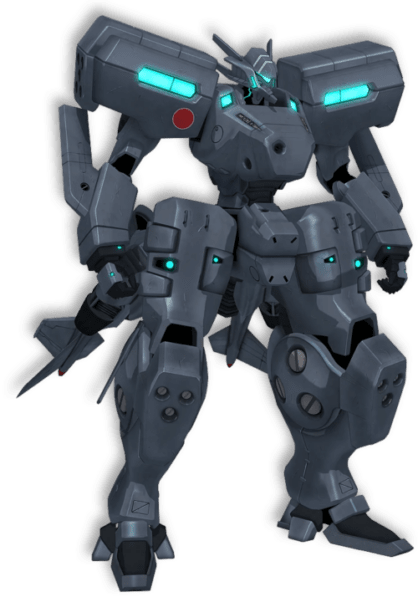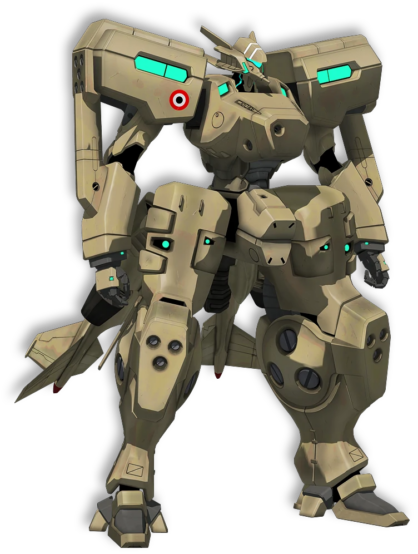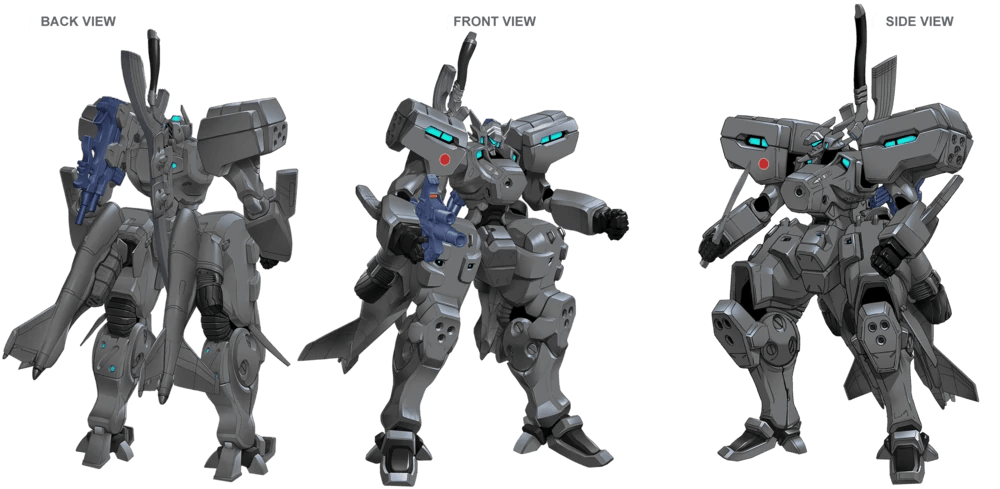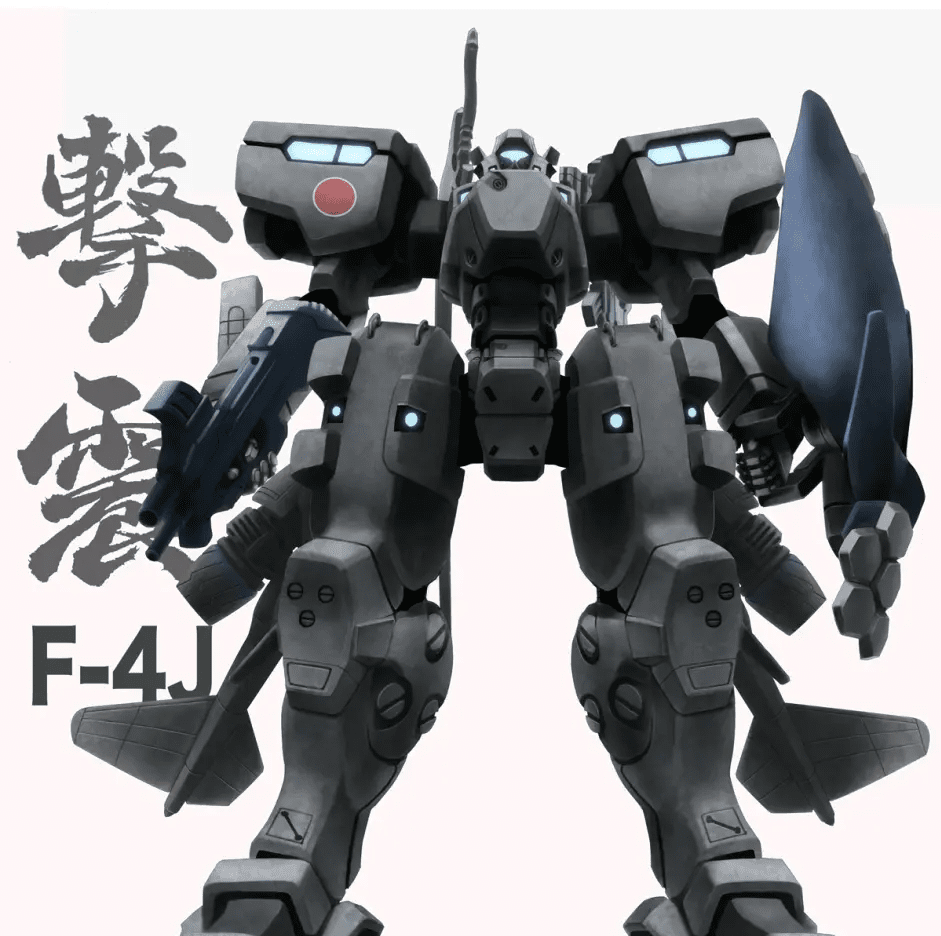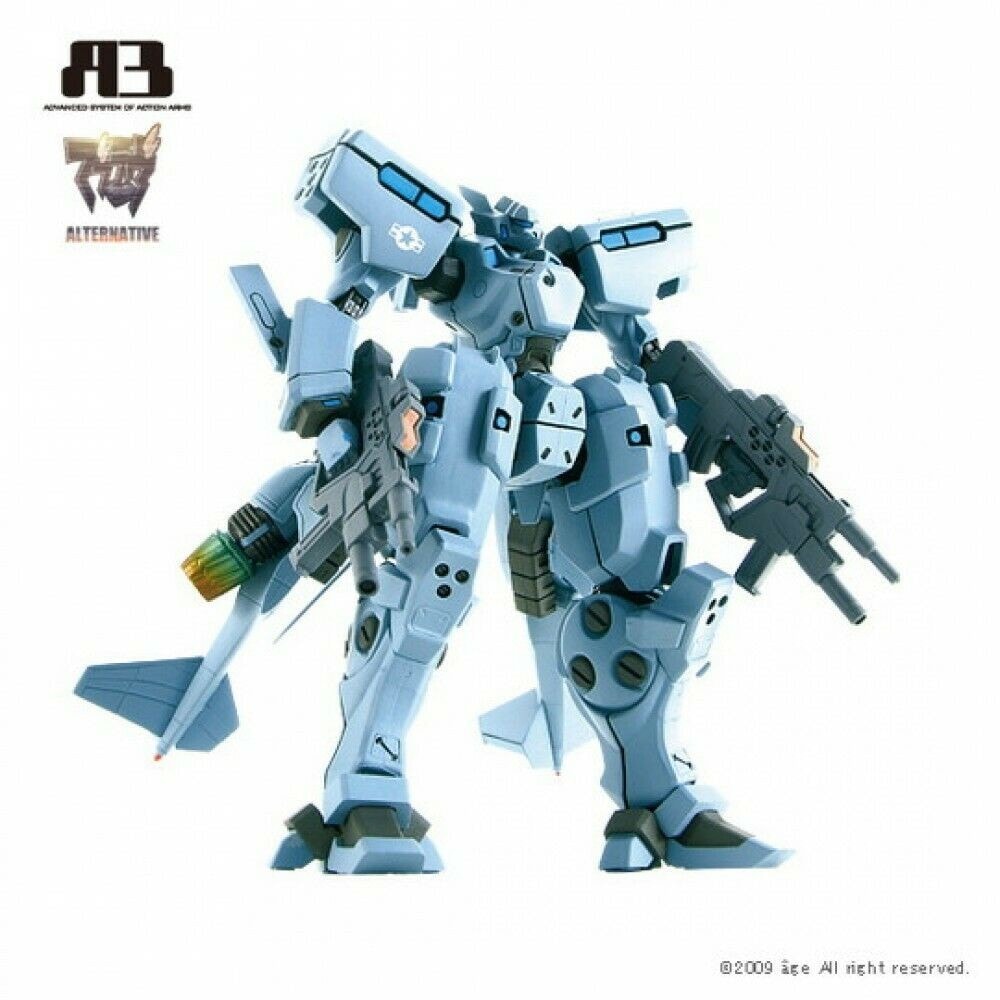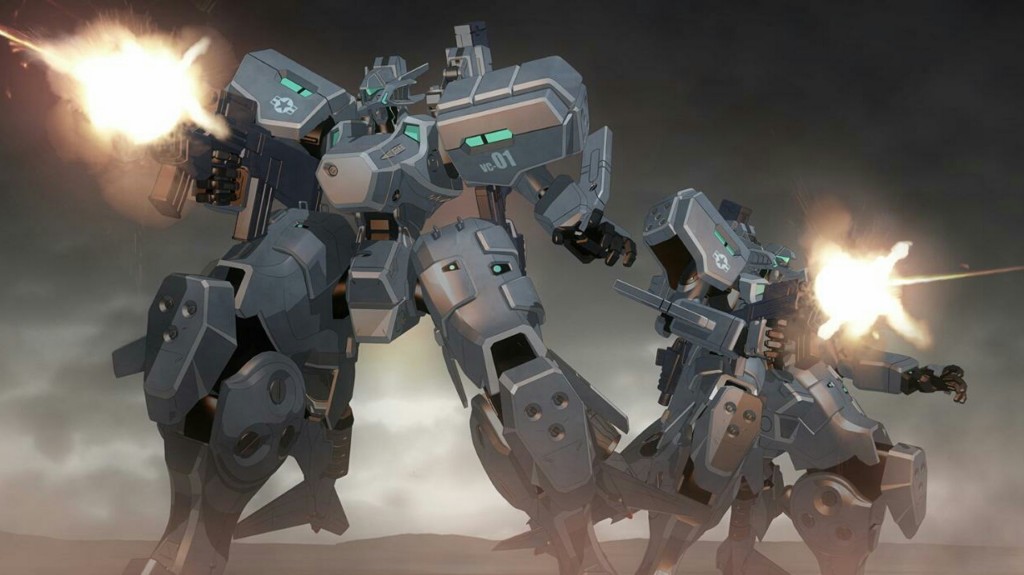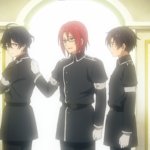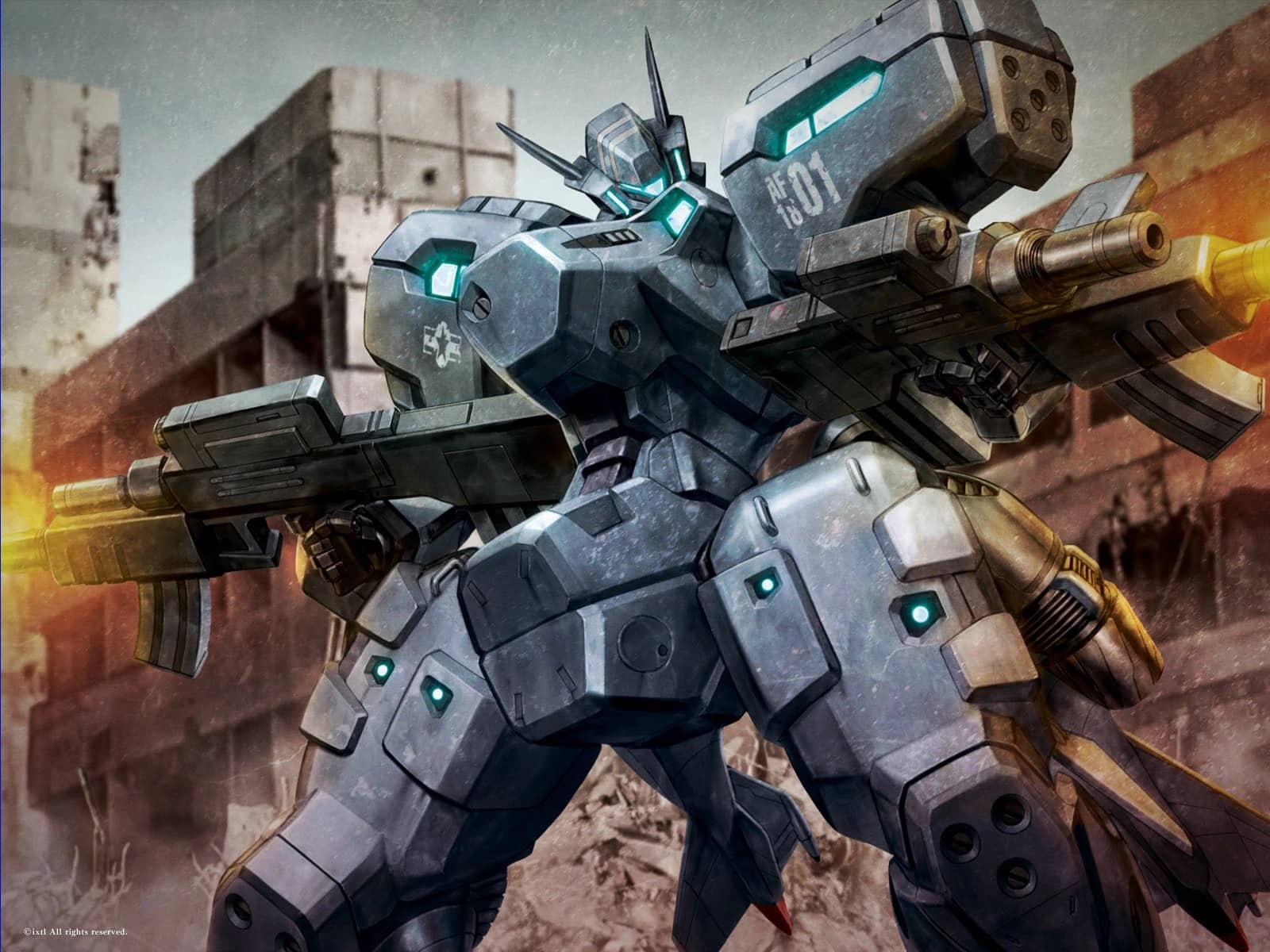
Mecha Profile: F-4 Phantom – Muv-Luv Alternative
Muv-Luv is a mecha franchise that is based heavily on the real world, especially jet fighter development. Much like Macross, the mecha designs of Muv-Luv is heavily influenced by real-life fighter jets. However, the Tactical Surface Fighter – the mechs as we call it in the Muv world – aren’t transformables like the Variable Fighters, but just pure giants of jet fuel and gunpowder, built to combat the alien threat – the BETA. And mankind’s first TSF – the first shield of humanity – is the F-4 Phantom, which is based on the fighter of the same name.

I. Development History:
– When the BETA invaded the Moon, the U.S started a program called NCAF-X to develop bipedal machine to combat the alien threat on the Lunar Surface, led by MacDaell – an aerospace manufacturer (based on McDowell in real life). However, in 1973, the BETA landed on Earth, the focus of the project shift to developing mechs that can withstand 1G combat. From the prototype NCAF-X of the project, the conceptual F-4 Phantom was created by McDaell. In 1974, the first TSF – F-4 – was deployed on the battlefield in the Eurasia continent. With the Air Force nullified and Tactical Nuke not working, the F-4 quickly became a shield for humanity and was ordered by multiple nations for self-defenses.
– When first introduced to the front line, the Phantom wasn’t popular with the air-force pilots, due to insufficient training and a completely new war machine concept. However, it quickly became apparent that TSFs are necessary to ensure humanity’s survival. Soon after, variations of the F-4 are quickly developed in multiple countries to suit their specific battlefield – such as the F-4R for the USSR, the F-4J for Japan or F-4E for Egypt. As the manufacturer of the first TSF, the United States received so many orders that they weren’t able to deliver due to constraints, so they encouraged other countries to start their own domestic development of the F-4 by sharing technology and data.
– As of 2001, all Phantoms unit in the US were withdrawn in exchange for newer, higher performance units. The remaining F-4s are sold off to other countries on the frontline of the BETA war. Meanwhile, many countries around the world are still using variations of the Phantom. Furthermore, its specification wasn’t stagnated but new upgrades were constantly introduced to bring the TSF to quasi-2nd-generation specs. All these were only possible thanks to McDaell’s foresight and their excellent fundamental design of the craft. The fact that the BETA invasion has stagnated after the appearance of the F-4 is a testament to how much of a revolutionary weapon TSFs had been.
– When the BETA invaded the Moon, the U.S started a program called NCAF-X to develop bipedal machine to combat the alien threat on the Lunar Surface, led by MacDaell – an aerospace manufacturer (based on McDowell in real life). However, in 1973, the BETA landed on Earth, the focus of the project shift to developing mechs that can withstand 1G combat. From the prototype NCAF-X of the project, the conceptual F-4 Phantom was created by McDaell. In 1974, the first TSF – F-4 – was deployed on the battlefield in the Eurasia continent. With the Air Force nullified and Tactical Nuke not working, the F-4 quickly became a shield for humanity and was ordered by multiple nations for self-defenses.
– When first introduced to the front line, the Phantom wasn’t popular with the air-force pilots, due to insufficient training and a completely new war machine concept. However, it quickly became apparent that TSFs are necessary to ensure humanity’s survival. Soon after, variations of the F-4 are quickly developed in multiple countries to suit their specific battlefield – such as the F-4R for the USSR, the F-4J for Japan or F-4E for Egypt. As the manufacturer of the first TSF, the United States received so many orders that they weren’t able to deliver due to constraints, so they encouraged other countries to start their own domestic development of the F-4 by sharing technology and data.
– As of 2001, all Phantoms unit in the US were withdrawn in exchange for newer, higher performance units. The remaining F-4s are sold off to other countries on the frontline of the BETA war. Meanwhile, many countries around the world are still using variations of the Phantom. Furthermore, its specification wasn’t stagnated but new upgrades were constantly introduced to bring the TSF to quasi-2nd-generation specs. All these were only possible thanks to McDaell’s foresight and their excellent fundamental design of the craft. The fact that the BETA invasion has stagnated after the appearance of the F-4 is a testament to how much of a revolutionary weapon TSFs had been.

II. Technical Specs:
– The Phantom is a 1st-generation TSF and stands at 17.1 meter-tall. It utilizes the FE79-GE-2A engine in each of the Jump Unit, which it has two. The Jump Unit is a combination of jet engine as well as rocket engine that allows for full three-dimensional maneuver which conventional fighter jets do not have.
– The Phantom comes equipped with 2 CIWS-1A (Close-in Weapon System) combat daggers on its forearms. As well as WS-16 Assault Cannon – a 20mm autocannon with a 105mm smoothbore cannon attachment. As the war went on, a 36mm autocannon and 120mm smoothbore combo are used instead.
– The Phantom boasts various features from many branches of the military, such as ease of deployment, mobility and maneuverability of aircraft, suppressive and supporting firepower of tanks.
– The first wave of F-4 Phantom is fitted with very basic avionics and sensors. As TSF development progress, more advance tech such as data-link, heat resistant armor, laser-coating armor, lightweight armor.
III. Variation:
The F-4 Phantom boasts the largest amount of variation among all TSFs, with many offshoot and derivatives in different countries as well. There are:
- F-4B: A variant that includes data-link support
- F-4D: A variant with improved attacking precision
- F-4N: A variant featuring a body frame with extended operational life, and improved attacking precision.
- F-4R: A Soviet variant adopted by the USSR, geared forward cold climate operation.
- F-4E: An Egypt variant. The final product in the Phantom line, with upgraded specs equal to a quasi-2nd-generation standards and several addition to the unit, such as anti-Laser coating, improved heat-resistant anti-projectile armor material, anti-Laser early warning system, as well as new Jump Units to improve its mobility. It remains in use by the African Union, Turkey, Israel, and other nations around the world
- F-4J/Type-77: Gekishin: a variant used by the Imperial Japanese Army, with enhanced close quarter combat capabilities.
- TF-4J Gekishin: A training version reduced to 60% of the original output.
- F-4JX: a proof-of-concept craft aimed towards delivering a TSF with 3rd-generation standards while maintaining the same outwards appearance as the Gekishin. The F-4JX boast many upgrades compared to the original.
IV. Trivia:
– While its official name in real-life is the “Phantom II”, in the world of Muv-Luv BETA-verse, the F-4’s name is simply “Phantom”.
– Like the real-life F-4, the F-4 in the Muv-Luv is heavily armored and not very maneuverable compared to later TSF types. This is also reflected in its design with the bulky lower-half.
– The F-4J Gekishin is the only TSF available in the first days of Project Mikhail – a TSF-action game set in the world of Muv-Luv Alternative.
– The Phantom is inspired by various designs from Studio Nue, particularly the Power DoLLS.
V. Gallery:
– While its official name in real-life is the “Phantom II”, in the world of Muv-Luv BETA-verse, the F-4’s name is simply “Phantom”.
– Like the real-life F-4, the F-4 in the Muv-Luv is heavily armored and not very maneuverable compared to later TSF types. This is also reflected in its design with the bulky lower-half.
– The F-4J Gekishin is the only TSF available in the first days of Project Mikhail – a TSF-action game set in the world of Muv-Luv Alternative.
– The Phantom is inspired by various designs from Studio Nue, particularly the Power DoLLS.
V. Gallery:

